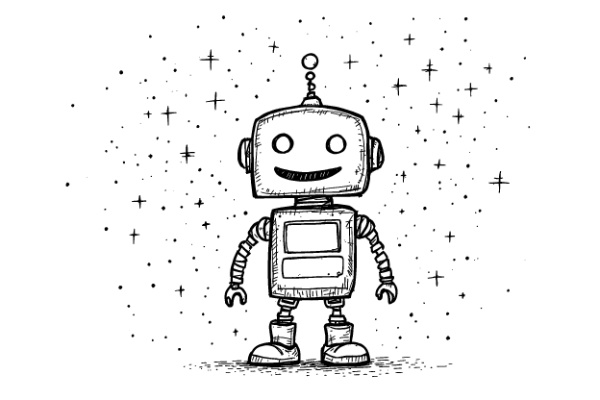Despite being the most crucial skill for any leader, the art of selecting great people remains largely untaught in business schools and leadership programs. Studies show that poor hiring decisions can cost organizations up to 30% of the employee’s first-year earnings, while the difference between average and top performers can impact productivity by 67%. Let’s explore how leaders can master this essential skill.
While automated recruitment tools can help streamline the process, the art of selection requires human judgment and expertise.
The True Nature of Leadership
Leadership, at its core, comes down to two fundamental elements:
- Setting the right team for your organization
- Helping those people achieve the results that will make them successful

Common Selection Mistakes
The Mirror Effect
Leaders often fall into the trap of trying to hire versions of themselves. This cognitive bias leads to homogeneous teams that lack diverse perspectives and complementary skills. Instead of seeking clones, successful leaders should focus on building balanced teams with varied strengths. As many experienced recruiters note, the goal isn’t to find people who think like you, but rather to find those who can bring fresh perspectives and specialized expertise to complement the existing team.
Much like how easy apply features can flood recruiters with applications, trying to hire generalists often leads to diluted talent pools.
The Superhero Syndrome
Another common mistake is searching for candidates who can do everything. Just as a football team needs specialized players in different positions, organizations need people with focused strengths rather than generalists who are mediocre at everything. The key is to identify specialists who excel in their core competencies while maintaining enough flexibility to collaborate effectively with others.
Expert Perspective
Experienced HR professionals advise moving beyond traditional STAR method interviews. The best candidates often reveal their true potential through natural conversations rather than rehearsed responses. Focus on understanding their authentic character and how they approach real-world challenges.
Transform Your Selection Process with Machine Hiring
Our platform helps you identify and select top talent with precision and efficiency. Using advanced AI and data-driven insights, we streamline your selection process while ensuring you find candidates who are the perfect fit for both role and culture.
Enterprise-Ready Features
The Three Pillars of Selection
1. Can They Do the Job?
The fundamental question is whether the candidate can deliver the desired outcomes. This goes beyond just checking qualifications - it’s about assessing their capability to achieve specific results.
2. Cultural Fit
Cultural alignment should be treated as a binary decision - either they fit or they don’t. No matter how skilled a candidate is, if they don’t align with your culture, they won’t succeed long-term. However, it’s important to note that culture shouldn’t be static - sometimes organizations need fresh perspectives to help evolve their culture in positive ways. The key is distinguishing between candidates who can positively influence culture versus those who might disrupt team harmony.
3. Life Fit
Consider whether the role fits the candidate’s life circumstances and career aspirations. This ensures long-term engagement and reduces turnover.
Organizations that prioritize candidate experience during selection often see better acceptance rates and longer retention.

A Structured Approach to Selection
Need Identification
Start by clearly defining what success looks like in the role. Avoid the common trap of creating an impossibly long list of requirements. Focus on the critical few rather than the trivial many.
Assessment Methods
A comprehensive selection process requires multiple evaluation approaches working in harmony. Structured interviews form the foundation, providing consistent evaluation across candidates while allowing for meaningful dialogue. However, as many HR professionals with 15+ years of experience point out, it’s crucial not to over-rely on rehearsed STAR method answers or keyword matching. Instead, focus on authentic conversations that reveal genuine character and potential. Job-specific assessments offer objective measures of critical skills, while work samples demonstrate practical capabilities in real-world scenarios. When possible, trial periods provide the most authentic preview of candidate performance and team fit.
Leadership Wisdom
Successful leaders recognize that investing time in proper selection saves countless hours of managing poor fits later. The most effective organizations prioritize thorough evaluation upfront to avoid the common trap of rushing to fill positions.
Data Interpretation
Learn to interpret candidate data effectively. Consider both “shouting talents” (obvious achievements) and “whispering talents” (hidden potential).
Cultural Fit
Cultural alignment should be treated as a binary decision - either they fit or they don’t. No matter how skilled a candidate is, if they don’t align with your culture, they won’t succeed long-term. However, it’s important to note that culture shouldn’t be static - sometimes organizations need fresh perspectives to help evolve their culture in positive ways. The key is distinguishing between candidates who can positively influence culture versus those who might disrupt team harmony.
Recruiter's Insight
Top recruiters consistently find that attitude and growth potential outweigh perfect credentials. The most successful hires often demonstrate genuine eagerness to learn and show maturity from past experiences, rather than presenting a flawless but rehearsed persona.
3. Life Fit
Consider whether the role fits the candidate’s life circumstances and career aspirations. This ensures long-term engagement and reduces turnover.

A Structured Approach to Selection
Need Identification
Start by clearly defining what success looks like in the role. Avoid the common trap of creating an impossibly long list of requirements. Focus on the critical few rather than the trivial many.
Assessment Methods
A comprehensive selection process requires multiple evaluation approaches working in harmony. Structured interviews form the foundation, providing consistent evaluation across candidates while allowing for meaningful dialogue. However, as many HR professionals with 15+ years of experience point out, it’s crucial not to over-rely on rehearsed STAR method answers or keyword matching. Instead, focus on authentic conversations that reveal genuine character and potential. Job-specific assessments offer objective measures of critical skills, while work samples demonstrate practical capabilities in real-world scenarios. When possible, trial periods provide the most authentic preview of candidate performance and team fit.
Expert Perspective
Experienced HR professionals advise moving beyond traditional STAR method interviews. The best candidates often reveal their true potential through natural conversations rather than rehearsed responses. Focus on understanding their authentic character and how they approach real-world challenges.
Data Interpretation
Learn to interpret candidate data effectively. Consider both “shouting talents” (obvious achievements) and “whispering talents” (hidden potential).
Cultural Fit

Cultural alignment should be treated as a binary decision - either they fit or they don’t. No matter how skilled a candidate is, if they don’t align with your culture, they won’t succeed long-term. However, it’s important to note that culture shouldn’t be static - sometimes organizations need fresh perspectives to help evolve their culture in positive ways. The key is distinguishing between candidates who can positively influence culture versus those who might disrupt team harmony.
Leadership Wisdom
Successful leaders recognize that investing time in proper selection saves countless hours of managing poor fits later. The most effective organizations prioritize thorough evaluation upfront to avoid the common trap of rushing to fill positions.
3. Life Fit
Consider whether the role fits the candidate’s life circumstances and career aspirations. This ensures long-term engagement and reduces turnover.
Recruiter's Insight
Top recruiters consistently find that attitude and growth potential outweigh perfect credentials. The most successful hires often demonstrate genuine eagerness to learn and show maturity from past experiences, rather than presenting a flawless but rehearsed persona.
The Three Components of Capability
Heart (Personality & Drive)
A candidate’s core personality and intrinsic motivation form the foundation of their potential success. Start by understanding who they are as a person - their values, aspirations, and emotional intelligence. Cultural alignment and interpersonal skills play crucial roles in long-term success, often outweighing technical capabilities.Brain (Learning & Comprehension)
Cognitive capabilities extend far beyond traditional measures of intelligence. Look for candidates who demonstrate strong problem-solving abilities and, more importantly, learning agility. The ability to adapt and grow becomes increasingly valuable as organizations and roles evolve.Toolbox (Experience & Skills)
While experience matters, focus on how candidates have applied their skills and what they’ve learned from their experiences. Look beyond the resume to understand how they’ve handled challenges, adapted to change, and developed new capabilities. Consider transferable skills that might not be immediately obvious.
Implementation Strategy
Companies that leverage their existing candidate database effectively have a significant advantage in finding and selecting great people.
Document Your Process
- Create clear evaluation criteria
- Maintain detailed notes
- Review and refine regularly
Measure Results
- Track selection success rates
- Monitor retention metrics
- Gather performance data
Continuous Improvement
- Review past decisions
- Learn from mistakes
- Refine criteria and process
Want to learn more about building great teams? Check out our guides on Transform Your Candidate Experience and Recruitment Metrics That Matter.
Looking Forward
The future of selection will combine human judgment with data-driven insights. While technology can help reduce bias and improve efficiency, the art of selection will always require human wisdom to make final decisions.
Ready to improve your selection process? Try Machine Hiring and access tools that make better hiring decisions possible.
Transform your hiring process with Machine Hiring - where art meets science in selection. Start your free trial today.
Beyond Traditional Hiring: The Whispering Talents
One of the most overlooked aspects of selection is identifying what we call “whispering talents” - candidates with exceptional potential that might not be immediately obvious on paper. Traditional hiring processes often favor “shouting talents” - candidates with prestigious degrees and obvious achievements - while missing out on equally valuable candidates with non-traditional backgrounds.
Identifying Hidden Potential
When looking for whispering talents, focus on:
Learning Velocity
- How quickly do they acquire new skills?
- What’s their track record of adaptation?
- How do they approach new challenges?
Problem-Solving Approach
- Look beyond solutions to understand thinking processes
- Evaluate creativity in resource-constrained situations
- Assess ability to simplify complex problems
Growth Mindset
- Evidence of self-improvement
- Response to feedback
- Initiative in personal development

The Role of Data in Selection
Moving Beyond Gut Feel
While intuition has its place, organizations using data-driven selection processes report 50% better hiring outcomes and 40% lower turnover rates. Modern selection should combine:
Quantitative Metrics
- Performance indicators
- Skills assessments
- Cognitive ability measures
- Behavioral assessments
Qualitative Insights
- Interview observations
- Reference feedback
- Cultural alignment indicators
- Team dynamics assessment
Creating a Feedback Loop
Successful selection processes improve over time through:
Performance Tracking
- Monitor new hire success rates
- Track time-to-productivity
- Measure team impact
- Assess cultural contribution
Process Refinement
- Regular criteria review
- Interview process updates
- Assessment tool evaluation
- Hiring manager training
Common Selection Pitfalls to Avoid
1. The Urgency Trap
Don’t let immediate needs compromise your selection standards. Studies show that rushed hires are 60% more likely to fail within the first year.
2. The Experience Fallacy
Experience doesn’t always equal capability. Focus on:
- Learning ability
- Adaptability
- Problem-solving approach
- Cultural contribution
3. The Interview Illusion
The ability to interview well doesn’t always translate to job success. While strong communication skills are valuable, they shouldn’t overshadow other critical factors. Many seasoned recruiters emphasize that perfectly rehearsed answers and flawless interview techniques can actually mask a candidate’s true character and capabilities. Instead of relying solely on interview performance, create a holistic evaluation process. Incorporate practical assessments that simulate actual job responsibilities. Gather insights from reference checks to understand past performance patterns. Observe candidates during team interactions to assess cultural fit and collaboration style. Most importantly, use work samples to evaluate practical skills and problem-solving approaches in real-world contexts.
Building a Selection Framework
1. Define Success Criteria
Before starting any selection process:
- Identify key outcomes
- Define performance metrics
- Establish cultural requirements
- Set clear expectations
2. Design the Process
A well-structured selection process serves as your roadmap to consistent, quality hiring decisions. Begin with clear initial screening criteria that identifies must-have qualifications while remaining open to diverse backgrounds and experiences. Develop a comprehensive assessment methodology that evaluates both technical and soft skills through multiple lenses. Create an interview framework that ensures consistency while allowing for meaningful exploration of each candidate’s unique qualities. Finally, establish a clear decision-making process that incorporates multiple perspectives and guards against common biases.
3. Implement Safeguards
Protect against common biases through:
- Diverse interview panels
- Standardized questions
- Objective scoring criteria
- Multiple perspectives
The Future of Selection
As we look ahead, selection processes will continue to evolve with:
1. AI-Enhanced Decision Support
- Predictive analytics
- Pattern recognition
- Bias detection
- Performance modeling
2. Hybrid Assessment Methods
- Virtual simulations
- Remote trial periods
- Collaborative projects
- Real-time skill assessment
3. Continuous Evaluation
- Dynamic performance tracking
- Regular fit assessments
- Ongoing development planning
- Team impact analysis
Want to dive deeper into modern recruitment practices? Explore our guides on ATS Benefits For Recruiters and Effective Talent Acquisition Methods.
Just as ethical considerations in AI recruitment are crucial, maintaining high ethical standards in selection helps build stronger, more diverse teams.
Taking Action
Start improving your selection process today:
Audit Current Practices
- Review recent hiring decisions
- Analyze success patterns
- Identify improvement areas
- Gather team feedback
Implement Changes Gradually
- Start with one department
- Test new approaches
- Measure results
- Refine and expand
Build Team Capability
- Train hiring managers
- Develop assessment skills
- Share best practices
- Create selection champions
Ready to transform your selection process? Try Machine Hiring and access AI-powered tools that help identify both shouting and whispering talents.
Transform your hiring process with Machine Hiring - where science meets art in talent selection. Start your free trial today.



